1. Life sustaining Wind (srog ‘dzin rlung)
The Life Sustaining Wind resides in the head (brain). Also called the Life-span Wind, it is the life fuel energy (tshe) stored in the middle channel and the bank of life energy like oxygen in a cylinder. It is released through the nostrils during respiration. In the body, the breath is divided in two parts: the majority of the breath is called the body wind (las rlung: karmic wind, meaning body breaths) and the rest is called the life sustaining wind (srog ‘dzin rlung), which is more subtle. Both are exhaled from the central channel through the mouth and nostrils.
Upon inhalation, the breath again divides into two parts when it reaches the nostril root. One part goes to the crown chakra (brain), becoming the energy which supports the consciousnesses and the continuation of the life sustaining Wind (brain) function.
This continuous use of the life energy resource reduces its amount day by day, like a candle slowly burning. Generally, the quantity of life energy in the central channel represents the basic life span of the person. Each person has a different amount and, according to Buddhism, this amount is determined by the previous lives’ karma. Therefore, no one but oneself is responsible for the amount of life-energy available.
Function: the life sustaining wind resides in the brain, the five sensory organs, the mouth, nostrils, and esophagus. It regulates the nervous system, memory, cognitive functions and analytical powers and ability to focus. It determines the emergence of the sense of “I” and controls organ function. It helps with swallowing , breathing, sneezing, spitting, vomiting, belching, etc. It clears the mind and the senses and sustains life. In short, it governs the whole head (brain) and crown chakra (psychic), and commands the entire body system. It regulates the pillar of the body or central energy channel, and the respiratory system. It keeps the body/mind balanced and holds and sustains the mind and its’ mental functions.
Disfunction: if the life sustaining wind becomes disturbed, one may lose consciousness and experience vertigo, lose control of the body/mind, experience problems with perception, mental confusion, and auditory hallucinations. It may cause respiratory problems such as shortness of breath; difficulty inhaling, problems in swallowing food and drink, and may lead to mental instability.
2. Ascending Wind (rgyen rgyu’I rlung)
The Ascending Wind resides in the chest, lungs, throat, larynx, mouth and nasal cavity and especially in the vocal cords. It moves upwards to the throat and enables breathing through the lungs, trachea and nostrils.
Function: this wind functions in the throat, larynx, tongue and nostril areas – it produces speech and voice, maintains the strength of the body, increases the body’s radiance, cleanses the skin and complexion, generates interest and artistic skill , and can produce mental clarity and awareness. It eliminates excretions like sputum, mucus, etc from the mouth, nose and other sense organs, throat, lungs, heart and chest.
Disfunction: imbalanced, this wind could be the cause of disorders associated with the upper part of the body in the thyroid lungs, it is also associated with a sore throat, laryngitis, breathing difficulties, headaches and neck and shoulder pain. It also monitors pressure in the sense organs and head, serves as the causal agent for problems of speech, loss of strength, facial paralysis and loss of consciousness. Disharmony of this wind during fetal development could produce various spinal or spondylolisthesis disorders as well as back, neck and chest deformations. Any psychological problems on the part of the mother may influence this wind which could negatively impact the fetus. Psychologically, the ascending wind manifests as attachment, desire and lust. It also provokes anger and nervousness.
3. Pervasive Wind (khyab byed rlung)
The Pervasive Wind (khyab byed rlung) resides in the heart, chest and shoulders, arms and hands, but it also pervades the whole body.
Function: it is responsible for range of motion movement in the upper body joints, as well as flexibility. It regulates the organs and cavity functions, assists in maintaining the muscular energy responsible for a vertical posture, etc. It sustains the heart function, makes the blood and wind circulate in all parts of the body and distributes nutrition. In short it rules all physical actions of the whole body especially in the chest.
Disfunction: when the pervasive wind malfunctions symptoms can include loss of balance, hypertension, chest tension, fear, panic attacks (Wind in the heart), fainting, loss of speech, general cardiac disorders, and joint pain particularly in the shoulders and back, blood circulation disorders, heart palpitations and rhythm disturbances. Psychologically, disorder of the Wind can result in talkativeness, the desire to roam, complaining and unfriendly speech. It also can produce anger, hatred and reactive emotional states. Therefore, according to Tibetan medicine bile and anger reside in the chest.
4. The Fire-like Wind (me mnyam rlung)
The ‘fire-like wind‘ or ‘fire accompanying wind’ (me mnyam rlung) resides in the stomach and intestines. It is the bile fire fanned by wind and so is called me nyam, fire-like.
Function: this Wind helps the digestive bile to break down food and assist in its’ assimilation and absorption, matures the nutrients and transports the food essences (chyle) to the liver and body. In short, it governs the abdominal area below the diaphragm and above the navel.
Disfunction: malfunction of this wind can cause a cold stomach, poor appetite, vomiting, and disturbed blood circulation in the stomach. It also manifests in chronic and acute digestive disorders, especially in the lower abdominal region, including gas, hiatal hernia, tension in the heart, back and chest pains, intestinal irritation, constipation, low metabolism, bacterial flora disorders, mal absorption, etc. Psychologically, an imbalance in this wind manifests as hunger, a yearning for power, egotism, pride, and greed.
5. Descending Wind (thur sel rlung)
The Descending Wind (thur sel rlung) resides and functions in the colon, bladder, reproductive organs, thighs, and especially in the sigmoid colon. It governs the part of the body below the navel. As its’ function is downwards, it is called the ‘Descending Wind’.
Function: it regulates sexual activity, controls the evacuation of feces and urine, as well as semen and menstruation discharge. It rules conception, fetus development and labor.
Disfunction: disturbances of this wind manifest boiling pains in the joints, loose or rigid and hard joints. It produces lower abdominal disorders such as lumbar and back pains, constipation, infertility, bladder and ejaculation disorders, menstrual disorders, hemorrhoids, intestinal hernias, and circulation issues in the lower body. Psychologically, this wind is crucial to the manifestation of joy and pleasant emotions but imbalanced wind disorders include jealousy, fear and worries due to a problem of lacking space in the heart.


